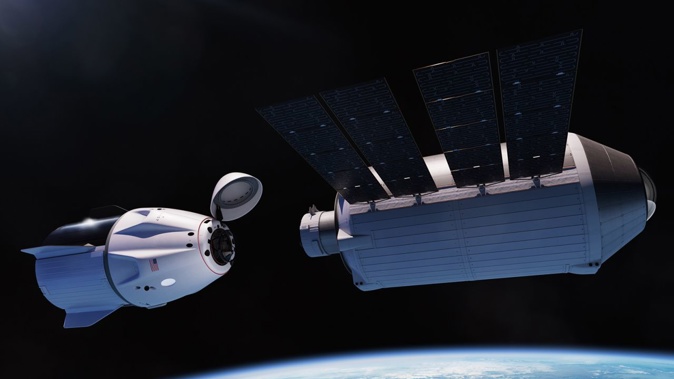
CNN — Vast — a California-based startup and one of the newest entrants in the world of privatized spaceflight — plans to use a SpaceX rocket to launch what it hopes to be the world’s first commercial space station and ferry passengers to and from the orbiting outpost.
It’s not clear how much the agreement, announced by Vast on Wednesday, will cost. Company leadership declined to comment on the matter to CNN. Nor is it clear how much a trip to the proposed space station would cost visitors, which could include professional astronauts or tourists.
Jed McCaleb, the founder and CEO of Vast who previously made a fortune in the cryptocurrency business, said in a statement that the company is “thrilled to embark on this journey of launching the world’s first commercial space station, Haven-1, and its first crew, Vast-1.”
McCaleb said he is investing $300 million of his own money into the effort, and he does not plan to seek outside investment for Vast until the company has its proposed space station built and can generate revenue. He added that he acknowledges the overall project will likely cost him more than $300 million.
It is not certain that Vast will indeed become the first company to put a private space station in orbit. Vast says it’s aiming for a launch date as early as August 2025. Developing a space station, however, is an exceedingly complex endeavor, requiring extensive testing and key technology such as life support systems.
McCaleb said Vast will have an advantage because it can leverage the life support systems already developed for SpaceX’s Dragon spacecraft, which the company plans to use to carry passengers to its space station.
Vast will equip its Haven-1 space station with the necessary consumables — such as oxygen and other life-sustaining materials — but the company won’t have to develop a life support system from scratch, McCaleb told CNN.
Other companies — including several with backing from NASA — are also working to develop private space stations. NASA, along with its global partners, is seeking to use a privately developed space station to replace the aging International Space Station, which has been continuously inhabited in low-Earth orbit since 2000.
The Biden-Harris administration and officials in Canada, Japan and participating countries of the European Space Agency authorized the ISS to stay in operation through 2030. But the other key partner on the International Space Station, Russia, has said it will only guarantee participation through 2028.
It’s not clear how much of the $300 million McCaleb has allocated to the Haven-1 project will go to SpaceX for launch services. Vast did not share financial details about its agreement with the company.
- SpaceX rocket explodes on launch
- SpaceX aiming for new era
- Elon Musk's SpaceX Starlink satellites spotted in sky above Auckland
- SpaceX reportedly fire employees critical of CEO Elon Musk
“The Dragon team and the team and leadership (at SpaceX) really want to build a Falcon 9-based space station,” said Max Haot, Vast’s president. Haot led the aerospace company Launcher before it was acquired by Vast in February. “So we’re very, very aligned.”
Vast’s simple, single-structure Haven-1 space station will be able to launch atop a SpaceX Falcon 9 rocket, the workhorse vehicle that SpaceX has been launching for more than a decade.

A rendering provided by Vast shows the company's proposed Haven-1 commercial space station. Courtesy Vast
After the spacecraft is sent into orbit, SpaceX would provide training to four members of the as-yet-unnamed crew for a mission dubbed Vast-1.
“Vast is selling up to four crewed seats on the inaugural mission to Haven-1,” the company said in a news release. “Expected customers include domestic and international space agencies and private individuals involved in science and philanthropic projects.”
Initially, the company plans for Haven-1 to operate independently, free-floating in Earth’s orbit. Later, the company plans to attach the spacecraft as a module to a larger space station.
Vast said its ultimate goal is to create a massive orbiting space station with artificial gravity that could be launched atop a SpaceX Starship vehicle, a rocket still in the development stages that exploded midair during its inaugural test flight in April.
Take your Radio, Podcasts and Music with you









